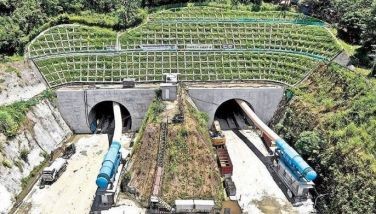Local dairy output to increase this year
MANILA, Philippines — Local dairy production is expected to recover this year, but the country will continue to rely heavily on imports to meet its total requirements due to lack of support to grow the sector, according to the United States Department of Agriculture (USDA).
In the latest report by its Foreign Agricultural Service (FAS), the USDA has forecasted the country’s dairy production to increase by three percent to 26,800 metric tons (MT).
Last year, Philippine dairy production declined by two percent to 26,000 MT due to a reduction of the dairy herd following the slaughter and retiring of older animals.
The expected rebound this year will be driven by the active implementation of the government’s dairy development projects geared toward increasing milk production.
However, despite the projected increase, total production will only supply one percent of the country’s total annual dairy requirement, and the rest to be served by imported milk.
“Production growth has been slow because of the inability to increase the dairy herd, mostly due to insufficient funding and little investment from the private sector,” the USDA said.
Last year, the country’s dairy consumption reached three million MT, far from the 26,000 MT produced in the same year.
The USDA expects higher consumption this year, supported by infrastructure investments – particularly in cold chain facilities, supermarkets, and display areas.
Jointly implemented by the Department of Education (DepEd) and the Department of Agriculture, the Milk Feeding Program (MFP) remains the growth driver for local milk consumption, the US agency said.
“Around 60 percent of the local fresh milk production goes to the MFP and the rest to local commercial sales or household consumption,” it said.
The DepEd earlier announced plans to increase the coverage for the program this school year after it surpassed its target by 183 percent and reached 3.2 million beneficiaries.
The return of businesses to pre-pandemic operations is also seen driving dairy consumption this year, the USDA said.
It noted that businesses are now allowed to increase seating capacity, allowing dine-in customers, opening hotel operations beyond quarantine hotels, and permitting small businesses like burger kiosks, milk teas, and other food stalls to operate.
“Malls are open to vaccinated individuals, and a majority of the working population has returned to work. With overall purchasing power improving,” it said.
With the projected higher consumption and limited local supply, the USDA said the Philippines is a competitive market for dairy imports, with the United States and New Zealand serving bulk of its requirements.
Last year, overall imports grew by 3.4 percent volume terms to 3.035 million MT and 10.8 percent in value terms, data from the National Dairy Authority (NDA) showed.
Most dairy products had lower import volumes, except for whey powder, cheese – which saw the highest growth of 31 percent, butter (including butterfat and spreads), and buttermilk powder.
“FAS Manila sees overall dairy imports recovering in 2022 as the economy reopens, most of the population becomes vaccinated, and business operations expand. Hotels are resuming full operations in 2022, which will accelerate dairy consumption,” the USDA said.
- Latest
- Trending

























